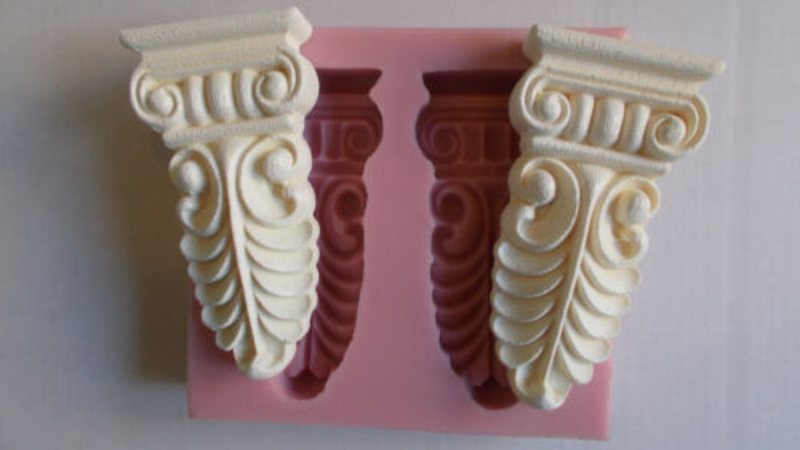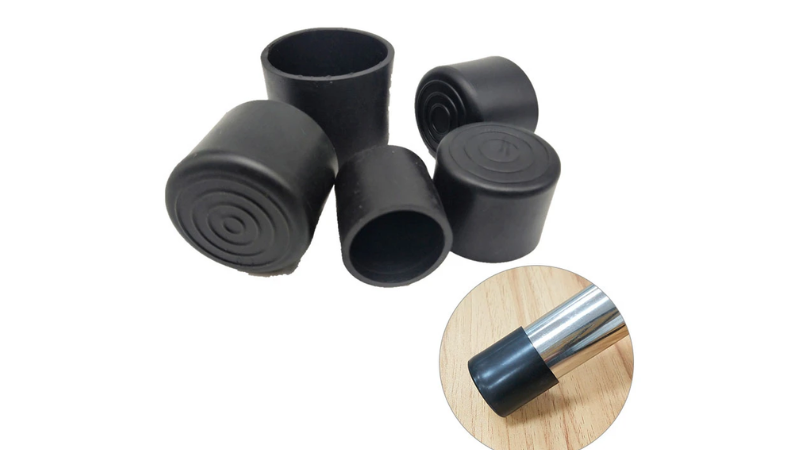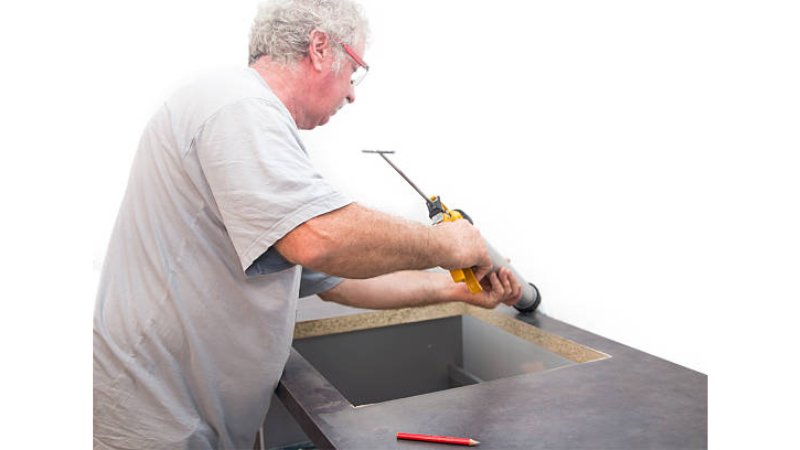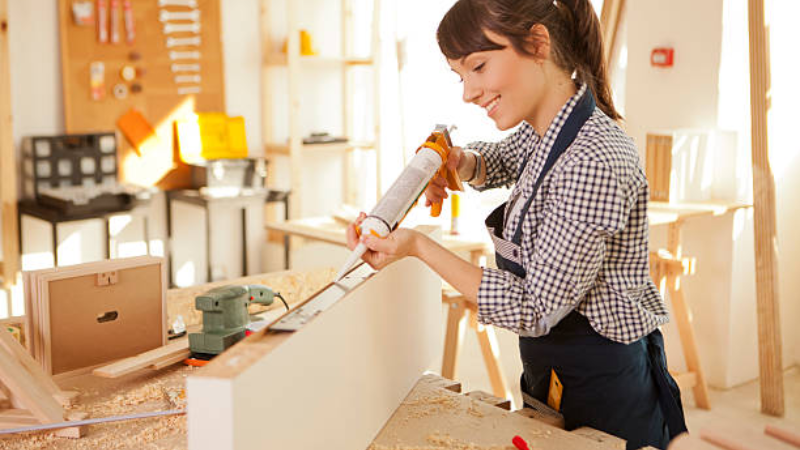This article explores silicone rubber’s properties that make it ideal for furniture design. We also discuss its advantages and some innovative examples.
What is Silicone Rubber?

Silicone rubber consists of silicon, hydrogen, carbon, and oxygen. The rubber-like material is flexible and can be molded into several shapes and sizes. Besides its flexibility, silicone is highly sought after in the manufacturing industry due to its excellent properties.
Silicone rubber is weather-resistant, waterproof, and has a low compression set. Other properties of this elastomer include its electrical resistance, low toxicity, and high resistance to extreme temperatures.
What Types of Silicone Rubber Are Used in Furniture Design?

There are different types of silicone rubber used in furniture design. These silicone rubber materials vary in properties and consistency. Usually, the choice of silicone rubber for furniture design will depend on the specific application and the desired properties of the final product.
The types of silicone rubber used in furniture design include;
High-Consistency Rubber (HCR)
High-consistency rubber (HCR) is a solid or semi-solid elastomer that is flexible and versatile. The elastomer consists of long polymer chains with a high molecular weight. In addition, this type of rubber can be molded into different shapes.
High-consistency rubber is often made in large batches with components blended into a homogenous mixture at a high temperature. A peroxide catalyst is used for curing the material. HCR silicone rubber has high tensile strength, heat resistance, and tear resistance. Consequently, it is used for producing joints and connectors in furniture design.
Liquid Silicone Rubber (LSR)
Liquid silicone rubber (LSR) is also used in furniture design. This elastomer is a two-part silicone-based polymer cured with platinum. LSR has a more flowy consistency compared to HCR. In addition, LSR materials have properties including water and oil resistance, low compression set, transparency, and electrical insulation.
Furthermore, LSR is non-toxic and can be easily colored to create aesthetic furniture parts. In furniture design, LSR parts are used for cushioning and padding applications.
Room Temperature Vulcanizing (RTV)
Room temperature vulcanizing (RTV) rubber is another type of silicone rubber. This type of rubber has a low viscosity and is cured at room temperature through vulcanization. However, this elastomer has properties including flexibility, high tear strength, and thermal resistance. RTV rubber is used to create molds for unique and intricate furniture designs.
Properties of Silicone Rubber for Furniture Design

As mentioned earlier, silicone rubber has excellent properties that make it ideal for manufacturing processes. The properties that make this elastomer suitable for furniture design include the following;
Chemical Resistance
Chemical resistance is essential in furniture design because of safety, maintenance, and durability. Chemically-resistant furniture materials do not become a hazard when exposed to chemicals.
In addition, chemicals may degrade the material, and the buildup may lead to damage. Because of its chemical resistance, silicone rubber does not lose its structural integrity upon chemical exposure. Silicone rubber is resistant to acids, bases, and solvents like alcohols and ketones. The elastomer can also withstand oils and greases.
Water Resistance
Water resistance is a critical factor to consider in furniture design. Exposure to water can lead to damage, discoloration, and unsightly stains on furniture. As a result, silicone rubber is frequently used as a material for furniture due to its excellent water resistance.
Silicone rubber maintains its physical and mechanical properties even when exposed to water for extended periods. This material is resistant to swelling and degradation that often occurs to other elastomers when exposed to water. Moreover, silicone rubber can provide long-lasting and reliable furniture that is resistant to damage and staining from wetness. Therefore, silicone rubber is a highly effective material for furniture making, offering an excellent balance of cost-effectiveness, durability, and moisture resistance.
Electrical Insulation

Furniture needs to be electrical insulators for safety reasons. This is especially essential if the furniture has electrical components or wiring like in-built charging stations. In addition, due to its insulation, furniture will not interfere with the performance of electrical parts, ensuring durability.
Silicone rubber has low electrical conductivity and high dielectric strength, making it an electrical insulator. Therefore, this elastomer is desirable in furniture design, especially if it incorporates electrical components.
Resilience
Resilient furniture materials can provide more comfort to users. They are also durable and can withstand repeated use without deforming. With resilient materials, manufacturers can make furniture that meets users’ needs while lasting many years.
Silicone rubber is resilient and can return to its original shape after applying and removing stress. The material also has a low compression set and can withstand degradation over time.
How are Furniture Parts Made from Silicone Rubber?

The process of making rubber parts from silicone rubber varies depending on its design and specifications. The common methods of manufacturing furniture parts from silicone rubber include injection molding, compression molding, and 3D printing.
The liquid injection molding process is the most common, with high precision and accuracy. During the process, liquid silicone rubber (LSR) is injected into a mold cavity and cured at high temperatures and pressures to form solid parts. Injection-molded parts are moisture-resistant, resilient, and can withstand UV radiation.
Compression molding is used to heat and compress pre-formed silicone rubber into desired shape and size. 3D printing, on the other hand, uses a computer-controlled printer to make desired rubber parts. The printer extrudes thin layers of rubber, layer by layer, till the part is formed.
Innovative Examples of Silicone Rubber in Furniture Design

Joints and Connectors
Joints and connectors are components for connecting and joining different parts of a furniture piece. They support furniture and provide stability. In addition, silicone rubber joints and connectors are water-resistant and provide electrical insulation to improve the functionality of a finished product.
Cushions and Padding
Cushions and padding are crucial elements of furniture design, providing comfort and support for users. Various materials can be used to make these components, but silicone rubber has emerged as a standout choice. Silicone rubber is particularly suitable for manufacturing cushions and padding for ergonomic chairs. The material provides excellent support and distributes pressure evenly, making it an ideal choice for reducing stress and promoting good posture. Additionally, silicone rubber is highly durable, making it an excellent investment for long-term use.
Unique Designs and Textures Using Silicone Rubber
Silicone rubber is used to create unique furniture designs. For example, the elastomer can be molded into different patterns to create textured surfaces. In addition, silicone inserts can be used to create accents on furniture pieces to give the furniture a unique look.
Furthermore, because silicone rubber is flexible, it can be molded into unique shapes to create custom-designed furniture pieces.
Advantages of Using Silicone Rubber in Furniture Design

1. Durability to Wear and Tear
Because silicone rubber can resist wear and tear, the material is durable and can last as long as possible. In addition, the elastomer can withstand harsh conditions, including heat, chemicals, and UV radiation. Consequently, silicone rubber is a choice material for furniture design.
2. Non-toxic and Environmentally Friendly
Silicone is a non-toxic material because it does not contain harsh chemicals. Therefore it is hypoallergenic and does not cause skin reactions when used in furniture. Furthermore, the material is durable and reusable, reducing environmental waste.
3. Customizable and Versatile
Silicone rubber is versatile and customizable in different furniture designs, shapes, and sizes. The material is also colorful and can be colored to match a desired hue. Another customization of silicone rubber is to mix it with other materials like fabric to create unique patterns and innovative designs.
4. Flexible and Moldable
Silicone rubber is a flexible and moldable material. It can be molded and shaped to fulfill even the most exacting requirements. Furthermore, due to its molecular structure, the elastomer can bend and stretch without breaking or losing its shape.
The Importance of Silicone Rubber in Facilitating Innovative and Sustainable Design Practices

Silicone rubber has exceptional properties that make it ideal for facilitating innovative and sustainable designs. The material is non-toxic and hypoallergenic, promoting healthy living environments. In addition, silicone rubber is recyclable and can be repurposed into new furniture pieces, making the material sustainable.
Other properties that make silicone rubber a choice material for sustainable furniture design are its customizability, durability, and flexibility.
Conclusion
Silicone rubber is a highly sought-after material in the manufacturing industry, especially in furniture design. The material is versatile, flexible, durable, and an electric insulator.
Furthermore, silicone rubber for furniture design is sustainable because of its recyclability and non-toxicity. With the growing demand for eco-friendly furniture, the silicone rubber furniture industry is expected to grow in the coming years.
Get Your Customized Silicone Products Here!
Silicone rubber furniture is an essential part of a sustainable future. You can get long-lasting silicone rubber products from a reputable manufacturer like Hongju. Moreover, we provide customized products to suit our customers’ specifications. In addition, our quality silicone rubber products are sustainable, and we are confident that we can offer the perfect solution for your business.